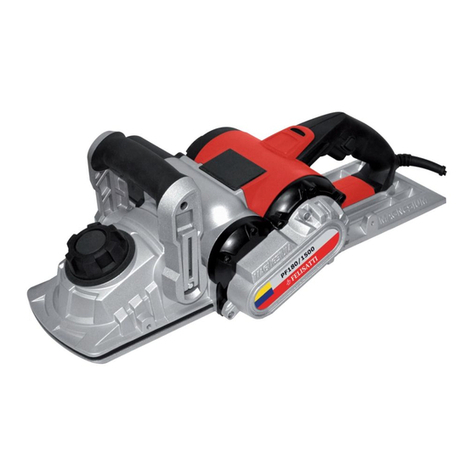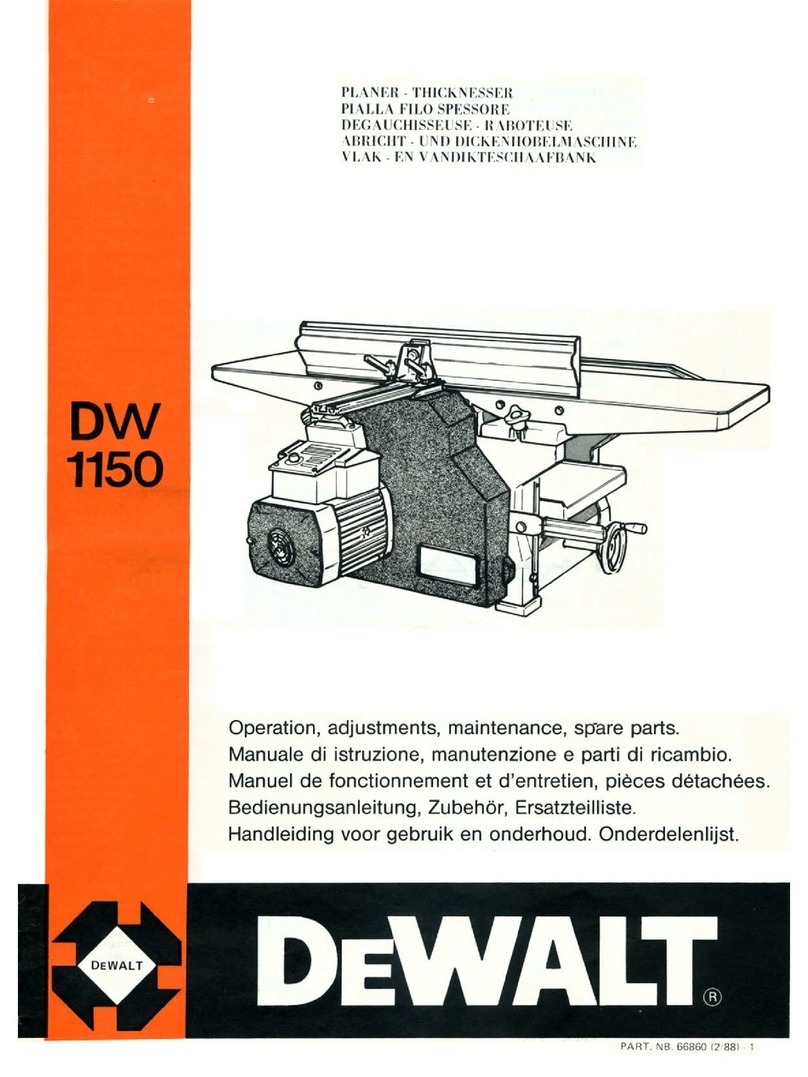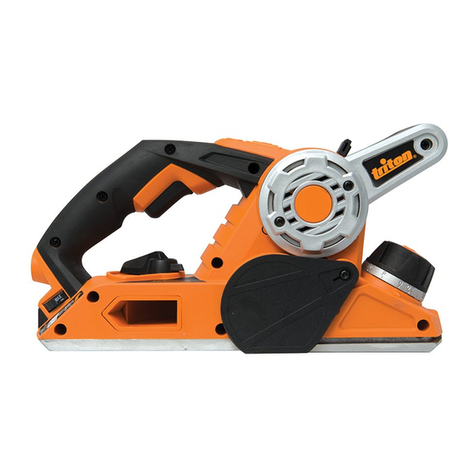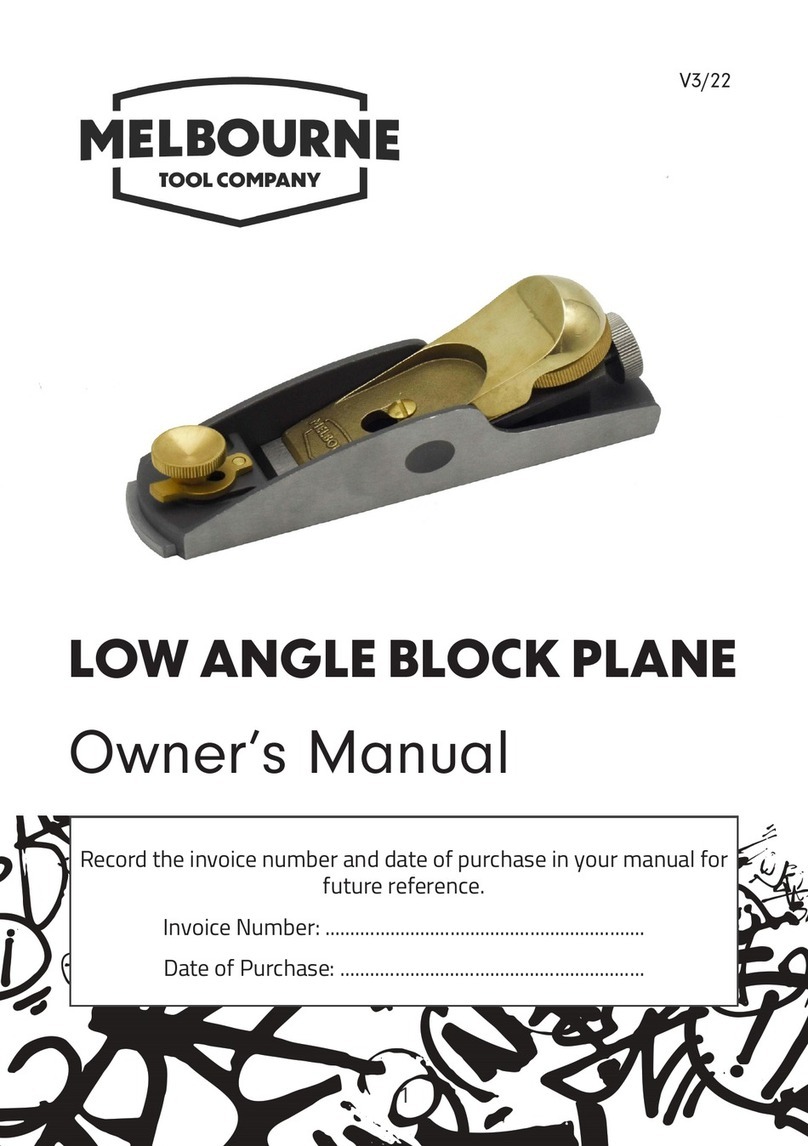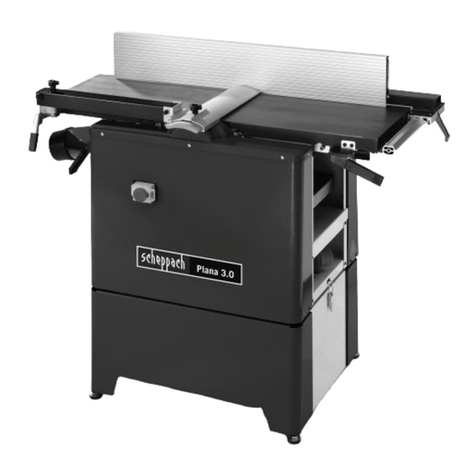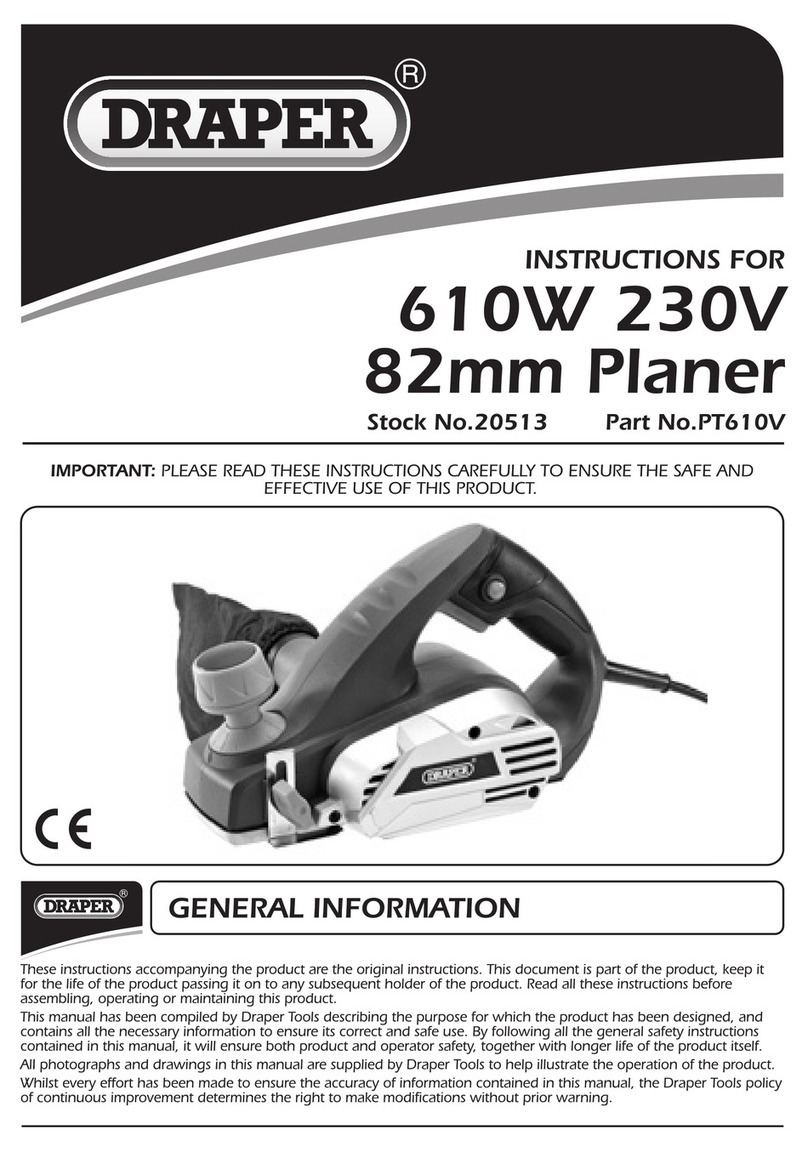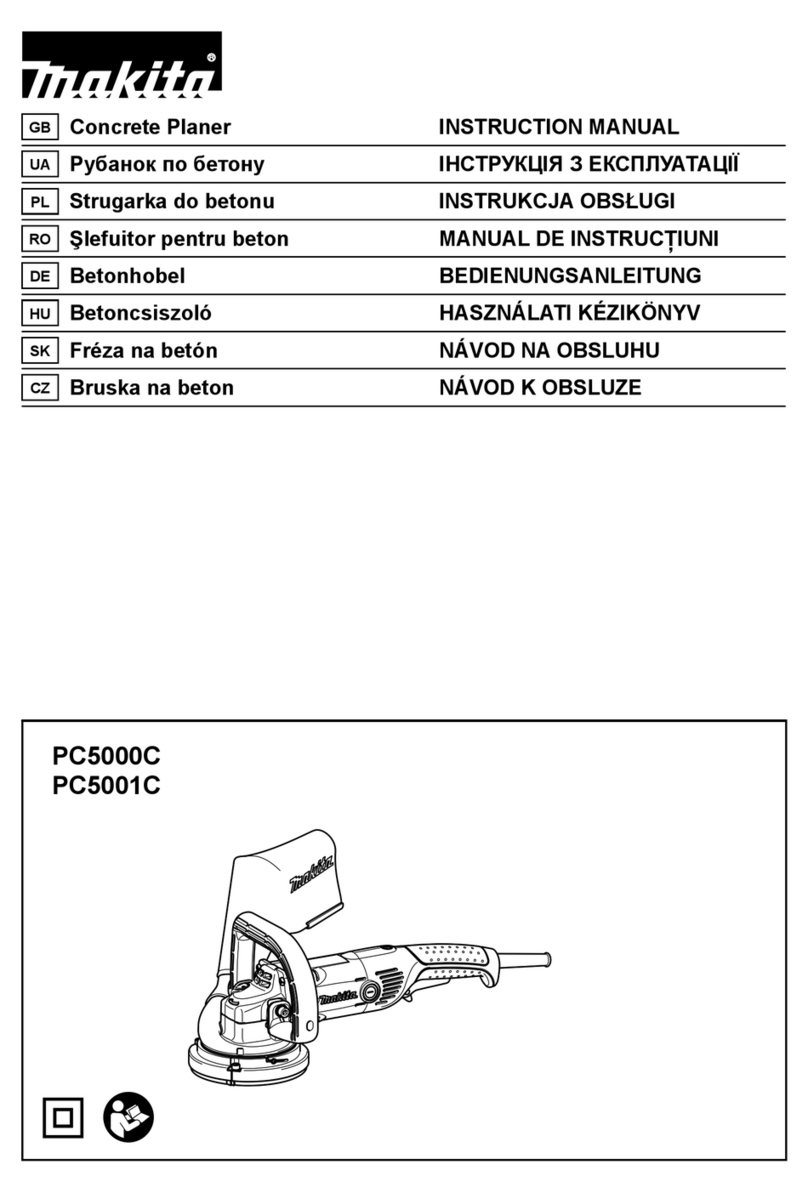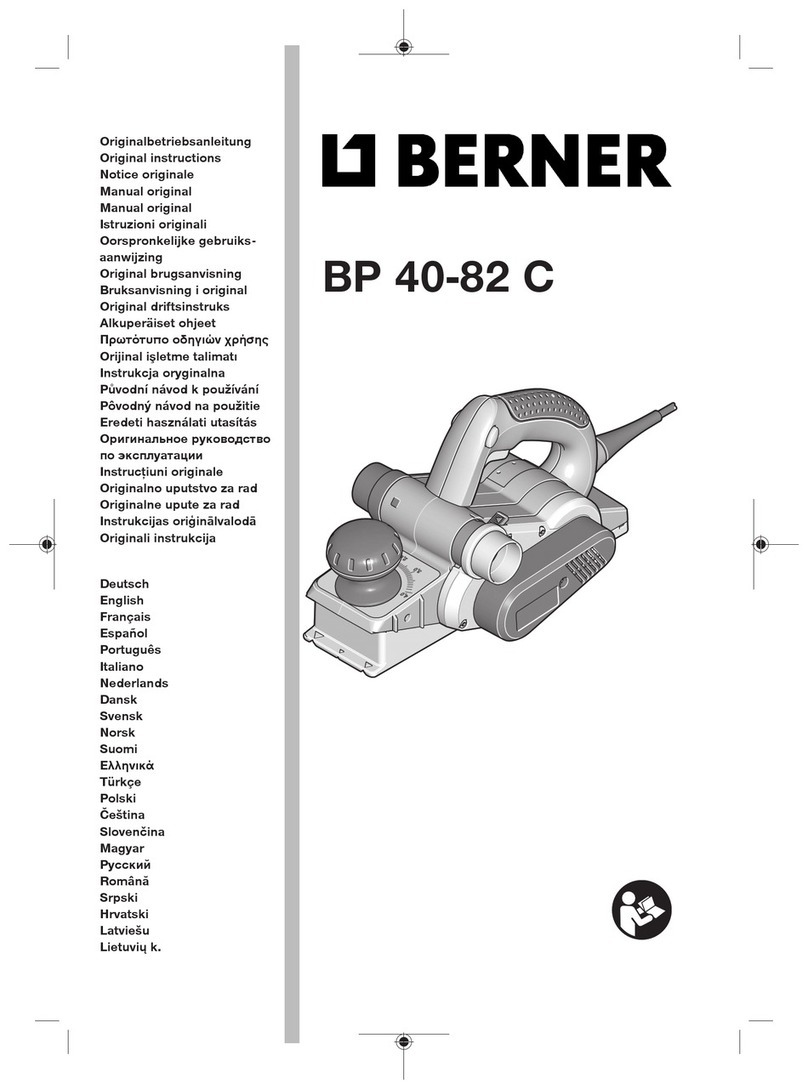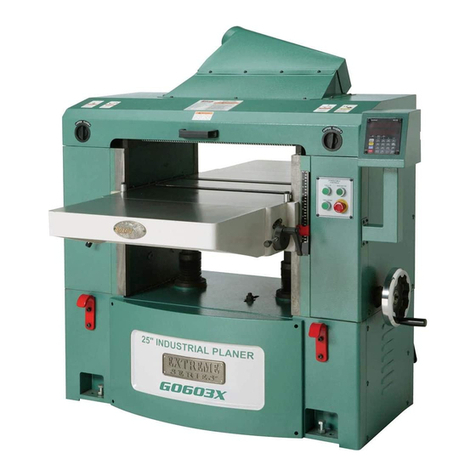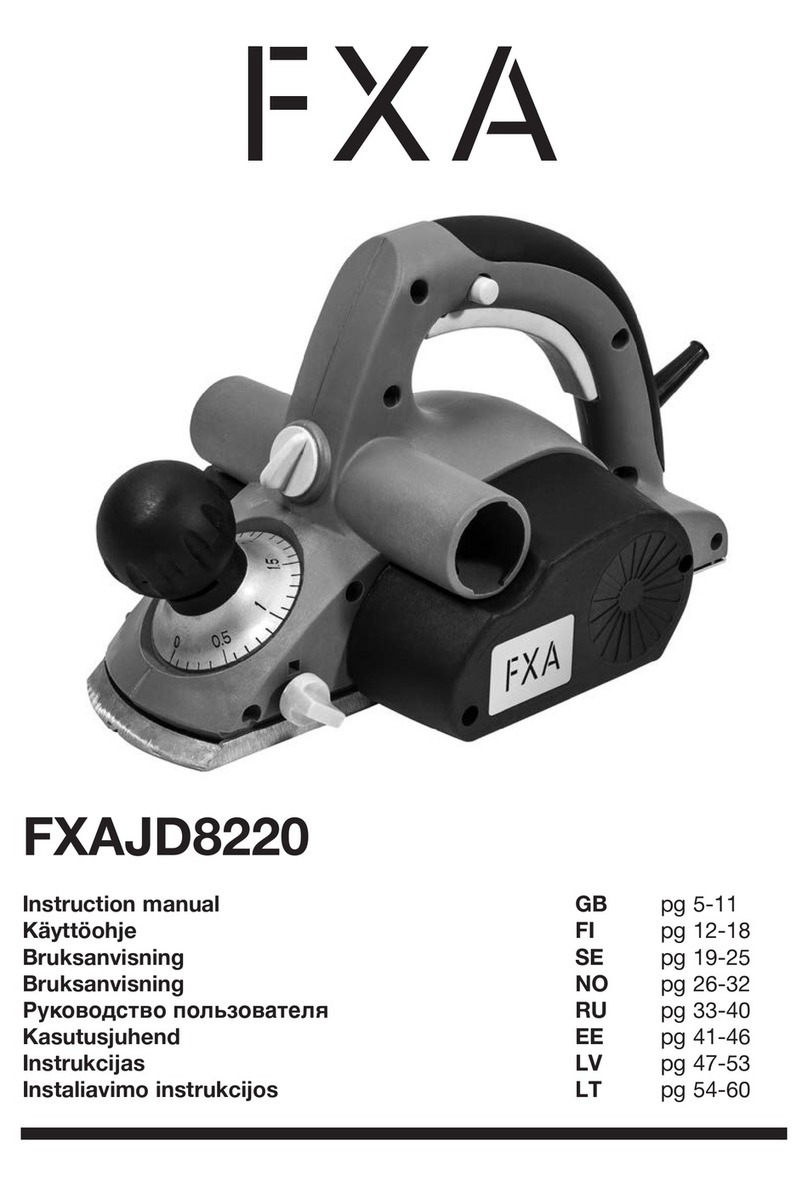
POWER PLANER 82MM
2
be followed to reduce the risk of fire, electric shock, and personal
injury, including the following:
READ ALL INSTRUCTIONS.
- KEEP WORK AREA CLEAN. Cluttered areas and benches invite injuries.
- CONSIDER WORK AREA ENVIRONIMENT. Don’t use power tools in
damp or wet locations. Keep work area well lit. Don’t expose power tools
to rain. Don’t use tool in presence of ammable liquids or gases.
- KEEP CHILDREN AWAY. All visitors should be kept away from work
area. Don’t let visitors contact tool or extension cord.
- STORE IDLE TOOLS. When not in use, tools should be stored in dry,
and high or locked-up place – out of reach of children.
- DON’T FORCE TOOL. It will do the job better and safer at the rate for
which it was intended.
- USE RIGHT TOOL. Don’t force small tool or attachment to do the job of a
heavy-duty tool. Don’t use tool for purpose not intended.
- DRESS PROPERLY TOOL. Don’t wear loose clothing or jewelry. They
can be caught in moving parts. Rubber gloves and non-skid footwear are
recommended when working outdoors. Wear protective hair covering
to contain long hair.
- USE SAFETY GLASSES. Also use face or dust mask if cutting oper-
ation is dusty.
- DON’T ABUSE CORD. Never carry tool by cord or yank it to discon-
nect from receptacle. Keep cord from heat, oil, and sharp edges.
- SECURE WORK. Use clamps or vise to hold work. It’s safer than using
your hand and it frees both hands to operate tool.
- DON’T OVERREACH. Keep proper footing and balance at all times.
- MAINTAIN TOOLS WITH CARE. Keep tools sharp and clean
for better and safer performance. Follow instructions for lubricating
and changing accessories. Inspect tool cords periodically and if
damaged, have repaired by authorized service facility. Inspect
extension cords periodically and replace if damaged. Keephandles
dry, clean, and free from oil and grease.
- DISCONNECT TOOLS. When not in use, before servicing, and when
